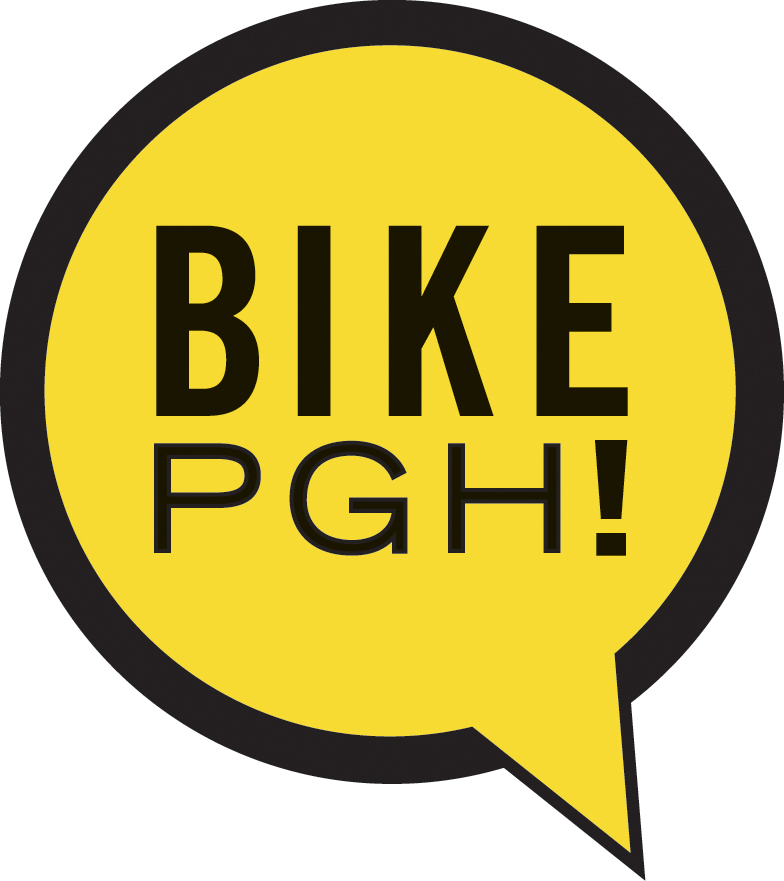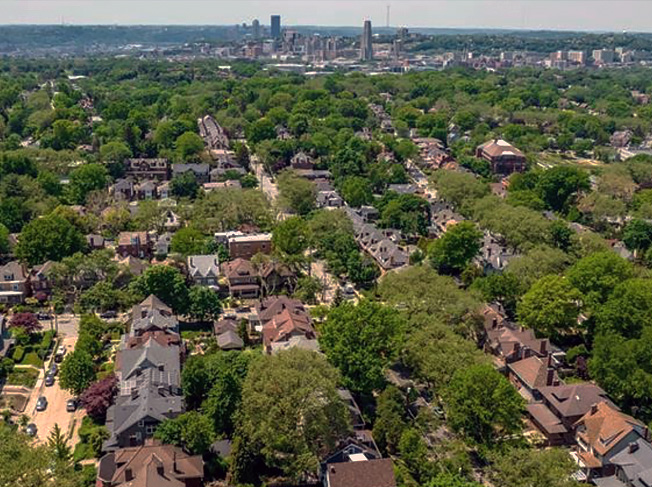2025 Lunar New Year - Celebration moved indoors to the JCC Levinson Hall A!
By Eric Boerer of Bike Pittsburgh
The closure of the Greenfield Bridge has no doubt created transportation headaches for the
 By Eric Boerer of Bike Pittsburgh
By Eric Boerer of Bike Pittsburgh
The closure of the Greenfield Bridge has no doubt created transportation headaches for the residents of Squirrel Hill. These difficulties also present some new opportunities, especially for those who may be looking into getting around by bicycle. An increase in automobile traffic may bring cars and buses to a crawl, leaving the humble bicycle as the fastest, most convenient way to get around. Additionally, a road like Panther Hollow may even see a decrease in automobiles, creating a safer atmosphere for riding.
Over the past few years, the City of Pittsburgh has installed 60+ miles of on-street bicycle markings, leading to significant increase in people riding bicycles for basic transportation. Mayor Bill Peduto has ratcheted up this bike lane boom when he introduced Pittsburghers to “protected” bike lanes, which are essentially a bike lane with a physical barrier that separates cars from bikes. Whether you ride or not, it’s important to recognize that there are more people riding bikes on the streets than ever before, so knowing the basic laws and common behaviors is the first step in making sure that everyone gets to their destination safely.
So where do you start if you want to give bicycling a try? Fortunately, Squirrel Hill has many options for safely pedaling around by bike. There are a number of bike lanes, slow neighborhood streets, shared lane markings, as well as a close proximity to two major parks that make it easy to give cycling a shot.
First the basics. Bikes and cars must follow the rules of the road. That means moving at, or below, the speed limit, stopping at stop signs and all traffic lights. There are some special rules for bicyclists, for instance, in regards to sidewalks. While cars may never be on the sidewalk (not even to park), bikes are only prohibited in business districts. On the street, drivers may often see a bicyclist ride in the middle of the lane, which is perfectly legal. In many situations, this may be the safest place for the bicyclist to stay visible and to avoid the dreaded “door-zone,” preventing a collision with someone who swung their car door open without looking (according to PA law, the parked car is always at fault in this situation). Simply be patient and pass when it is safe to do so. The law allows drivers to cross the double yellow line in order to pass a bicyclist with a minimum of four feet. In reality, the safest thing you can do while driving is to simply drive the speed limit. For bicyclists, ride predictably, and always remain alert, even in bike lanes.
As stated earlier, the City has been busy installing many different types of bicycle infrastructure on the streets. Most of these markings are totally new to Pittsburghers. You’ve probably seen a symbol in the middle of the street of a bicycle with two chevrons above it. This shared-lane-marking, or “sharrow,” is placed on streets that are not wide enough to include a full bike lane, and serves a couple purposes. First, it serves as a visual reminder to drivers that they may expect to see people riding bicycles on that street and to share the road. Second, it offers a suggestion to bicyclists on where to physically place yourself in the road, to stay out of the aforementioned “door zone.” You will find sharrows on Forbes Avenue through the heart of the Squirrel Hill business district.
The next level of bike infrastructure is the common bike lane. These are placed in areas that are wide enough to carve out space and is meant exclusively for people on bikes. Drivers are not allowed to drive or park in them; however, bicyclists are allowed to exit them for a number of reasons, such as making a left turn, avoiding debris, or simply if they don’t feel safe in them. Regular bike lanes can be found on Forbes (from CMU as well as towards Frick Park) as well as Beechwood Blvd, the oldest bike lane in the City.
New to the scene is the protected bike lane. Neighboring Squirrel Hill, you will find these in both Greenfield and Oakland. These are bike lanes with a vertical element that physically separates the driving lane from the biking lane. So far in Pittsburgh, this is mostly limited to a plastic bollard, but it could be a number of things like concrete, planters, or even parked cars.
 An important step in beginning to ride a bike is to plan your route ahead of time. The Pittsburgh Bike Map (available at your local bike shop) and Google Maps are a great way to get started. While you will never be able to totally avoid hills in a neighborhood named Squirrel Hill, both of these resources will recommend tried and true bike routes to get you to your destination. After figuring out your route, give it a shot on the weekend, when traffic is lighter. Be sure to time yourself so that you can be sure to leave at an appropriate time. You may even find that it’s faster than driving, and you’ll get some exercise to boot. There are a large number of bicyclists, in Squirrel Hill, and meeting other people to ride with is one of the best ways to get on the saddle and get pedaling.
An important step in beginning to ride a bike is to plan your route ahead of time. The Pittsburgh Bike Map (available at your local bike shop) and Google Maps are a great way to get started. While you will never be able to totally avoid hills in a neighborhood named Squirrel Hill, both of these resources will recommend tried and true bike routes to get you to your destination. After figuring out your route, give it a shot on the weekend, when traffic is lighter. Be sure to time yourself so that you can be sure to leave at an appropriate time. You may even find that it’s faster than driving, and you’ll get some exercise to boot. There are a large number of bicyclists, in Squirrel Hill, and meeting other people to ride with is one of the best ways to get on the saddle and get pedaling.
For more info, see bikepgh.org or join up with the newly formed Squirrel Hill Bicycle and Pedestrian Committee.

Enter your email address to subscribe to our newsletter and receive notifications of new posts by email.
this is a test
this is a test